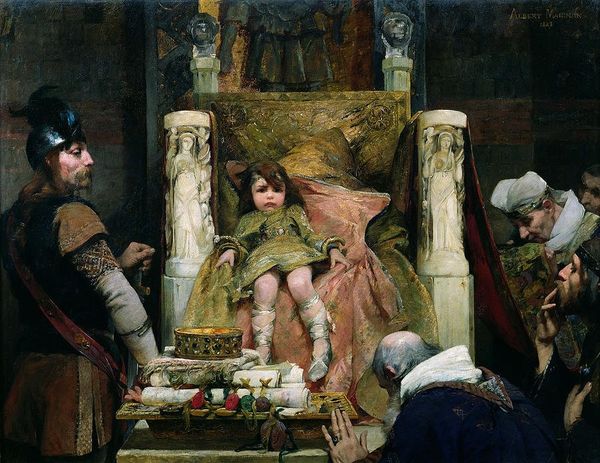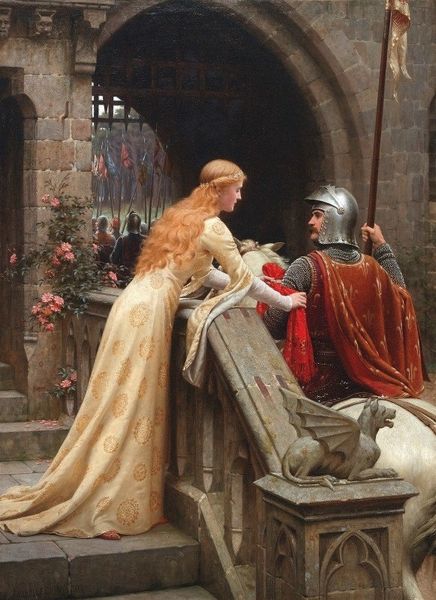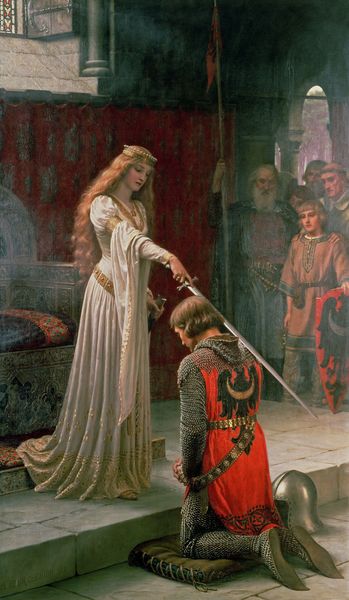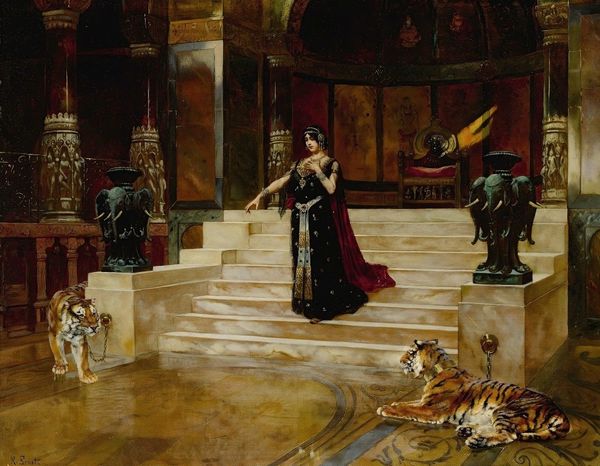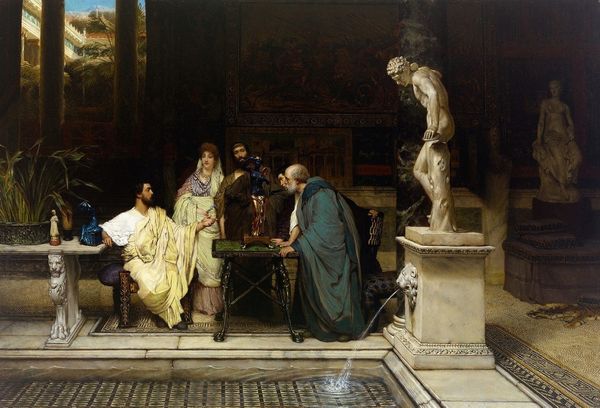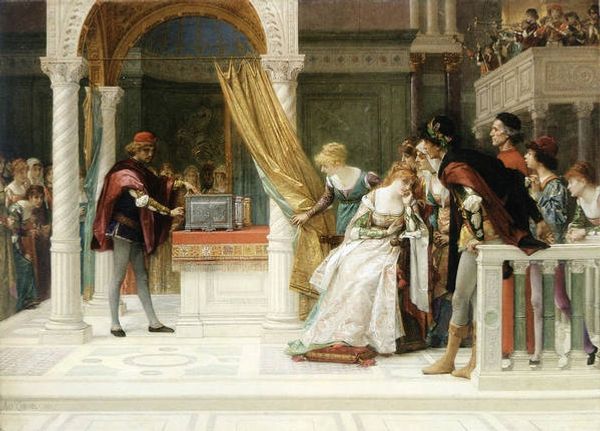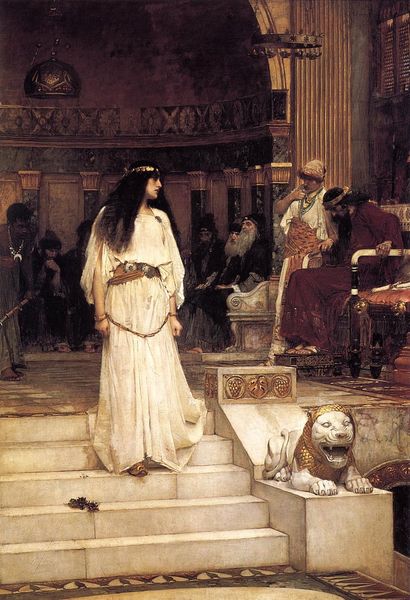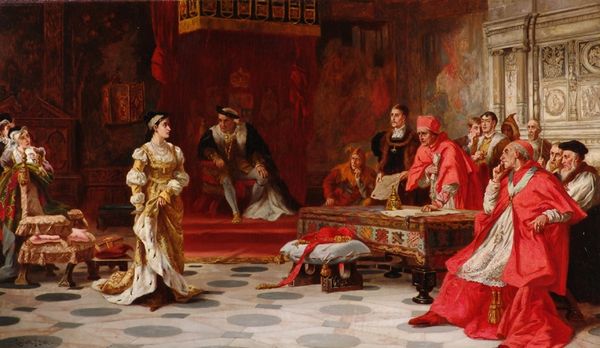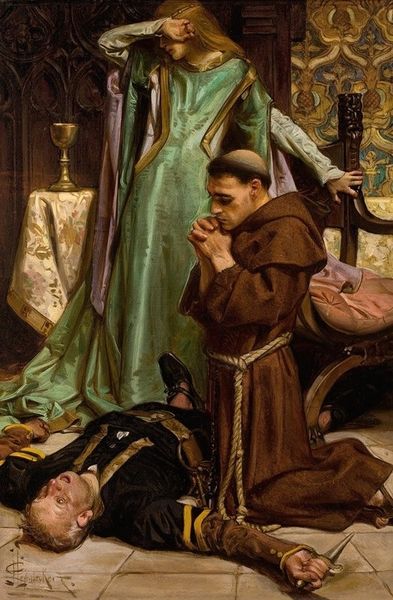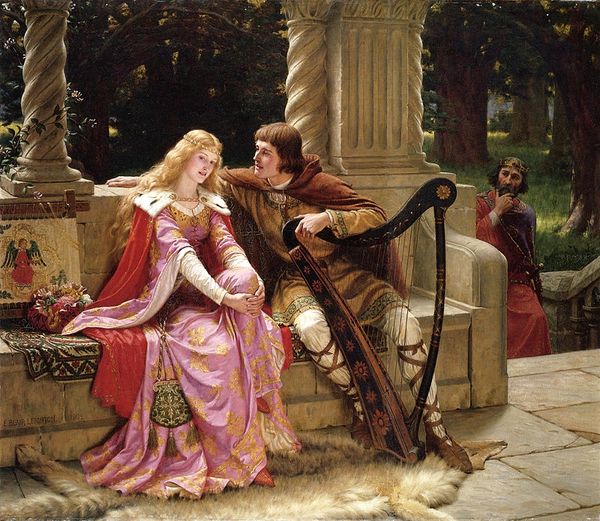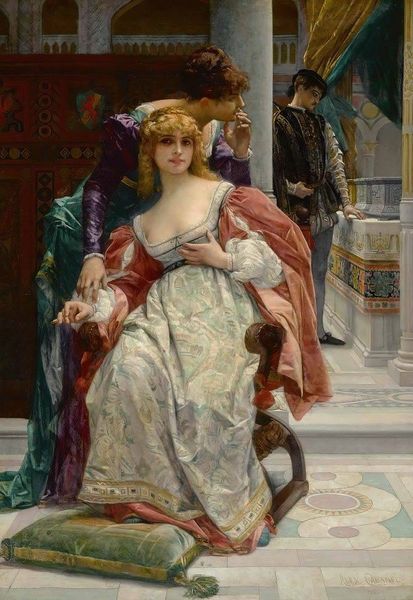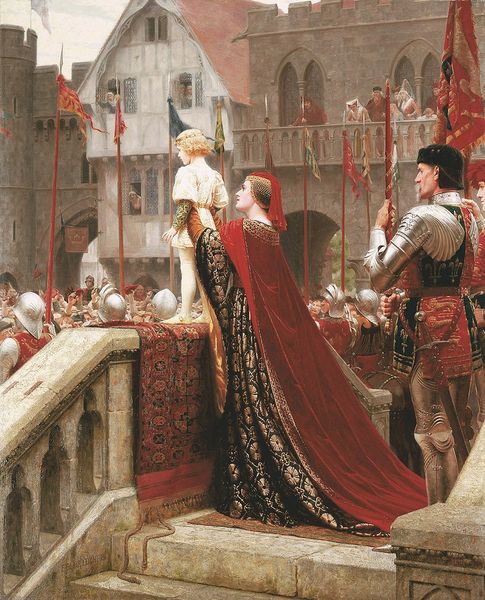
Copyright: Public domain
Editor: Edmund Blair Leighton's "Lady Godiva," painted in 1892, presents a scene of subdued defiance. I'm struck by how still she is, how domestic, almost trapped in this historical moment. What complexities do you see in its portrayal? Curator: It’s interesting you note that stillness, because for me, the painting resonates deeply with discussions around power, gender, and sacrifice. Leighton romanticizes a narrative, but it's crucial to ask, what aspects of societal injustice is he obscuring? Godiva's act was profoundly political, a challenge to male authority and economic oppression. How does Leighton's aesthetic choice to render this painting with academic art style neutralize her political statement and render it into a symbol of idealized femininity? Editor: That makes me reconsider her passivity. I’m curious about the way her near-nudity is presented. Is it a symbol of vulnerability, or is it meant to evoke agency? Curator: It's both, and that’s where the historical and contemporary clash. On one hand, her vulnerability is evident—she's exposing herself to immense personal risk. On the other, consider the act of taking control of her body as a form of political currency and expression, particularly in an era that seeks to restrict it. What power does she yield by using the very thing society attempts to control? Leighton’s romanticized, academic style softens that potent act of rebellion, doesn't it? Editor: It does. It's a sanitized version of defiance. Curator: Precisely! And recognizing that sanitization, unpacking the choices Leighton makes, allows us to use this painting as a launchpad for crucial conversations about gender, power, and the lasting impact of social action across time. Editor: That makes the painting feel much more relevant. I'll definitely think about those power dynamics when I see it again.
Comments
No comments
Be the first to comment and join the conversation on the ultimate creative platform.
